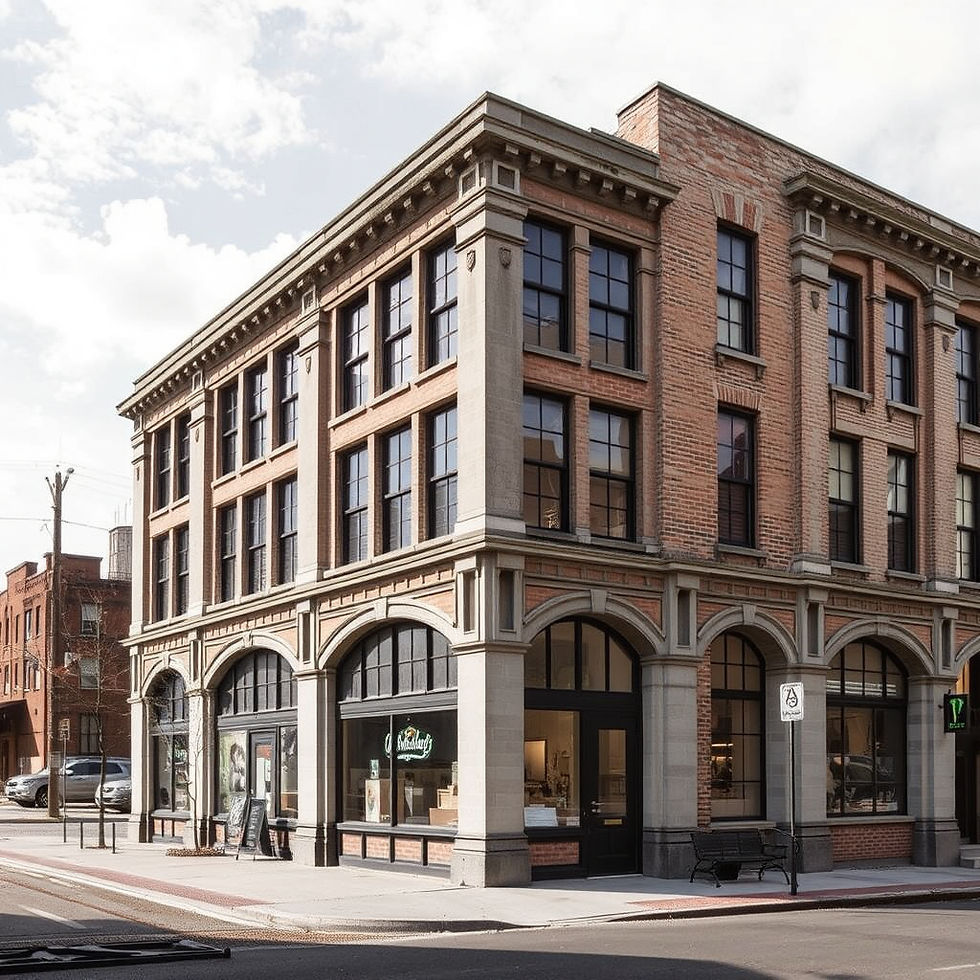The Passive House Standard
- Phase Zero
- Dec 8, 2023
- 3 min read
Updated: Oct 11
As the demand for low-energy, sustainable housing grows, the Passive House Standard (or Passivhaus) has emerged as one of the world’s most rigorous benchmarks for energy-efficient building design. Originating in Germany, this standard focuses on comfort, performance, and sustainability — creating homes that consume up to 90% less energy than traditional buildings.
This guide explains what the Passive House Standard is, how it works, and why it represents the future of sustainable construction.
1. What Is the Passive House Standard?
The Passive House Standard is a voluntary building performance standard designed to achieve ultra-low energy consumption through superior insulation, airtightness, and ventilation.
Unlike conventional building codes that focus mainly on materials or systems, the Passive House approach prioritizes building performance as a whole, ensuring minimal heat loss and maximum comfort.
Key Goal:To create buildings that maintain a stable indoor temperature year-round with little or no active heating or cooling systems.
2. Core Principles of Passive House Design
There are five fundamental principles that every Passive House follows:
A. Continuous Insulation
High-performance insulation wraps the entire building envelope — walls, roof, and floor.
Typical U-values are far below standard regulations, often around 0.10–0.15 W/m²K.
B. Airtight Construction
Prevents unwanted air leaks and drafts, maintaining consistent indoor temperatures.
Achieves an airtightness rate of ≤0.6 air changes per hour (ACH) at 50 Pa pressure.
C. High-Performance Windows and Doors
Triple-glazed windows with insulated frames reduce heat loss.
Orientation and shading are designed to maximize solar gain in winter and prevent overheating in summer.
D. Heat Recovery Ventilation (MVHR)
Mechanical ventilation systems supply fresh, filtered air while recovering up to 90% of heat from exhaust air.
Ensures superior indoor air quality without energy waste.
E. Thermal Bridge-Free Design
Every junction and connection is engineered to eliminate cold bridges, preventing condensation and heat loss.
3. Performance Targets for Passive House Certification
To achieve official certification by the Passive House Institute (PHI), buildings must meet strict criteria:
These benchmarks ensure both energy efficiency and year-round comfort for occupants.
4. Benefits of Passive House Construction
A. Energy Efficiency
Reduces heating and cooling demand by up to 90%.
Ideal for achieving net-zero or carbon-neutral buildings.
B. Superior Comfort
Consistent indoor temperatures with no cold spots or drafts.
Enhanced indoor air quality from continuous ventilation.
C. Long-Term Cost Savings
Lower energy bills and maintenance costs.
High-quality construction leads to longer building lifespan.
D. Sustainability
Significantly reduces carbon footprint.
Compatible with renewable energy systems like solar panels and heat pumps.
5. The Design and Construction Process
Planning & Modelling:
Energy modelling software (like PHPP) is used to predict performance.
Building Envelope Design:
High-insulation materials, thermal bridge analysis, and precise detailing.
Construction Stage:
Airtight membranes and tape systems applied meticulously.
Triple glazing and insulated doors installed with precision.
Testing & Certification:
Blower door tests verify airtightness.
Independent verification by a Passive House Certifier.
6. Passive House in the UK
The Passive House Standard is increasingly popular in the UK, aligning with the Future Homes Standard 2025 and local net-zero carbon goals.
Applications include:
Residential housing: Detached homes, terraces, and apartments.
Schools and offices: Providing healthy indoor environments.
Retrofits: The “EnerPHit” standard allows existing buildings to be upgraded to near-passive performance.
7. Challenges and Considerations
Initial costs: Slightly higher than standard construction (typically 5–10%), but offset by lower energy bills.
Specialist expertise: Requires trained Passive House designers and contractors.
Attention to detail: Small errors in airtightness or insulation can affect certification.
Despite these challenges, the long-term benefits — financial, environmental, and lifestyle — make the Passive House approach an excellent long-term investment.
8. The Future of Passive House Design
As the UK moves toward net-zero construction, the Passive House Standard is setting the benchmark for future-ready architecture. Its integration with modular systems, SIP panels, and renewable technologies positions it as the gold standard for sustainable design.
Future Passive House projects are focusing on:
Off-site construction for precision and efficiency.
Biophilic design integration for healthier living environments.
Affordable housing initiatives meeting high energy standards.
Conclusion
The Passive House Standard isn’t just an energy goal — it’s a philosophy of sustainable living. By combining airtight design, insulation, and intelligent ventilation, it delivers comfort, efficiency, and environmental responsibility in every build.
For architects, builders, and homeowners, adopting the Passive House approach means creating future-proof spaces that prioritise people, performance, and the planet.



